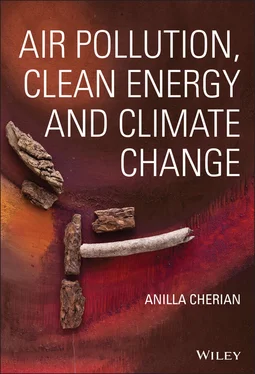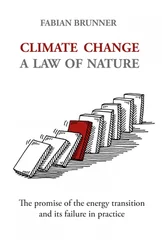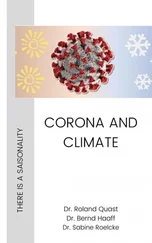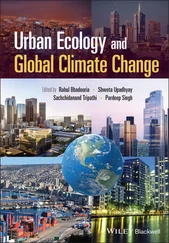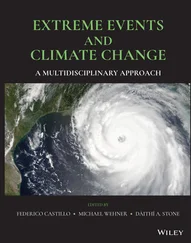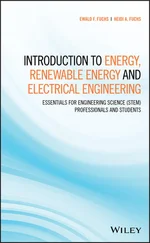Anilla Cherian - Air Pollution, Clean Energy and Climate Change
Здесь есть возможность читать онлайн «Anilla Cherian - Air Pollution, Clean Energy and Climate Change» — ознакомительный отрывок электронной книги совершенно бесплатно, а после прочтения отрывка купить полную версию. В некоторых случаях можно слушать аудио, скачать через торрент в формате fb2 и присутствует краткое содержание. Жанр: unrecognised, на английском языке. Описание произведения, (предисловие) а так же отзывы посетителей доступны на портале библиотеки ЛибКат.
- Название:Air Pollution, Clean Energy and Climate Change
- Автор:
- Жанр:
- Год:неизвестен
- ISBN:нет данных
- Рейтинг книги:5 / 5. Голосов: 1
-
Избранное:Добавить в избранное
- Отзывы:
-
Ваша оценка:
- 100
- 1
- 2
- 3
- 4
- 5
Air Pollution, Clean Energy and Climate Change: краткое содержание, описание и аннотация
Предлагаем к чтению аннотацию, описание, краткое содержание или предисловие (зависит от того, что написал сам автор книги «Air Pollution, Clean Energy and Climate Change»). Если вы не нашли необходимую информацию о книге — напишите в комментариях, мы постараемся отыскать её.
to leave no one behind
Air Pollution, Clean Energy and Climate Change
Energy and Global Climate Change
Air Pollution, Clean Energy and Climate Change — читать онлайн ознакомительный отрывок
Ниже представлен текст книги, разбитый по страницам. Система сохранения места последней прочитанной страницы, позволяет с удобством читать онлайн бесплатно книгу «Air Pollution, Clean Energy and Climate Change», без необходимости каждый раз заново искать на чём Вы остановились. Поставьте закладку, и сможете в любой момент перейти на страницу, на которой закончили чтение.
Интервал:
Закладка:
It is important to emphasize the fact that there is a tremendous amount of policy and analytical work being done by a wide range of entities and researchers on all three of the topics – clean/sustainable energy, clean air and climate change which, the remaining chapters in the book cannot remotely attempt to cover in any complete manner. Consequently, the aim of the remaining chapters are to attempt to build upon and tie together diverse threads of excellent research that has been done by so many others. The discussion contained also needs to be understood as being subjective and cannot be construed as being anywhere near as comprehensive in scope as needed to fully address the scale of PM pollution and climate change experienced by those most vulnerable within developing countries. Additionally, it is important to underscore that the broad topics of climate change, sustainable development and clean energy are some of the most heavily researched today. At the outset, it should be noted that the chapters of this book are narrowly circumscribed in their scope, and also do not purport to provide an in‐depth or historical view of UN climate change or energy for sustainable development negotiations. Key topics such as climate finance, adaption and resilience building as well as, energy and climate justice are recognized as crucial but nevertheless fall outside of the immediate purview of the discussion undertaken. Equally importantly, the overall focus on providing broad perspectives based on a categorization of countries as ‘developing’ should be seen as nuanced, and by no means can be considered as definitive and are reflective only as globally understood within the context of the UN SDA and PA.
At the core what is being argued is that it is time to look beyond the confines of intergovernmental negotiations, and to ask what can be done if access to clean air and clean energy is considered integral to responding to climate change by NNSAs including cities/local communities. The entwined climate change and fossil fuel air pollution crises pose double burdens for millions of lives and need to be addressed in an integrated and inclusive manner. The central aim therefore is to provide evidence that PM pollution extracts the heaviest tolls on the poorest and most vulnerable people and communities and that the global community has done little to address the world’s single largest environmental health risk. The heavy reliance on inefficient energy devices (open fires and traditional cook stoves) as well as inefficient sources of energy such as solid fuels and traditional biomass in poor households in developing countries, particularly those in sub‐Saharan Africa and South Asia has been documented to result in incomplete combustion of and release of SLCPs including BC which has serious health and short‐term climatic impacts (UNEP 2013). Emissions that result from the incomplete/inefficient combustion of solid fuels and traditional biomass are released as a mixture of health‐damaging indoor air pollutants such as BC, that have short atmospheric life spans but result in significant negative impacts to human health and climate change at the national and regional level (UNEP/WMO 2011). A key premise advanced is that the nexus between climate resilience, clean energy, poverty reduction and urbanization urgently needs to be transformed by the increasingly dynamic role of NNSAs including municipal and energy sector stakeholders.
Some of the key issues addressed and questions raised in the chapters are as follows:
What is the scope of agreed global guidance on NSA partnerships related to the proposed global partnership mechanism for SDGs (SDG 17) that are directly relevant to NNSAs including private sector‐driven partnerships focused on meeting clean energy for all (SDG 7) and climate change objectives (SDG 13)?
Given the central role of the energy sector in climate change and the linkages between the lack of access to clean energy and SLCPs, what exactly is the existing scope of global guidance that allows for distinguishing between partnership mechanisms/modalities related to SDGs 7 (Sustainable Energy) and SDG 13 (Climate Change)?
What does an examination of UN‐related partnership databases and portal reveal in terms of integrated action on clean energy access, curbing air pollution and addressing climate change?
How can integrated action that mitigates SLCPs and increases access to clean air and clean energy be scaled up for regions where these challenges are most urgent? What broad lessons can be learned from the CLRTAP and its Gothenburg Protocol, as well as the landmark assessment done by UNEP/WMO (2011) that are relevant for the most polluted cities in world?What are the broad parameters for scaling up linked action on clean air, access to clean energy and climate change for countries like India and Indian cities which are impacted by some of the highest levels of PM pollution?
The constant thread in all the chapters is that partnerships which integrate action on clean air, clean energy and climate action are crucial. The UN‐led global community has long focused on partnerships for sustainable development (PSD) as a means of delivering on an overarching pledge to eradicate poverty for the past decades so what for example is the track record of such partnerships in delivering on poverty eradication and access to clean energy? Chapters 2and 3examine the record of key UN global goals and partnership efforts focused on climate, increasing access to clean energy and air pollution. Chapter 2begins by providing context as to the global neglect of climate related health impacts that have particular relevance for poorer and more vulnerable communities and countries. It then focuses on the agreed global guidance and the implementation record of the global partnership mechanism for the precursor to the SDGs – the Millennium Development Goals (MDGs) to see whether increasing access to sustainable energy and curbing air pollution have been dealt with in the context of the SDGs. Chapter 2provides a historical analysis of the global record on partnerships mechanisms/modalities related to sustainable energy and climate action within the context of UN’s 2030 SDA. It provides evidence as to whether definitional clarity or confusion exists in terms of PSDs in particular those related to sustainable energy, climate change and clean air.
Chapter 3focuses on examining the agreed UN record on global partnerships mechanisms related to climate change including the Clean Development Mechanism (CDM) of the 1997 KP and the PA’s proposed Article 6 mechanism. Globally agreed climate change outcomes within the UNFCCC framework are examined in terms of integrated partnerships aimed at addressing poverty eradication, reducing energy related air pollution and climate change goals. The chapter concludes by reviewing the online partnership portal – the Non‐state Actor Zone for Climate Action (NAZCA) hosted by the UNFCCC. Given that the NAZCA portal is expressly aimed at partnership actions that cities, companies, investors and regions – i.e. NNSAs – are taking to address climate change, the aim is to critically examine this portal and the extent to which NNSAs actions within it are aimed at addressing SDGs on clean energy and climate change including most importantly SDG 1 – poverty eradication.
The need to focus on integrated action to curb SLCPs and air pollution that are not nation‐state driven but sectoral and city/community‐driven is the focus of Chapters 4– 6. The most recent projection by the UN’s Population Division is that, ‘Africa will have 22 per cent of the world’s urban population‐ 1.5 billion urban dwellers, while Asia, with 3.5 billion persons residing in urban areas, will have 52 per cent of the world’s urban population by 2050’ (UNDESA 2018, pp. 24–25). Integrated partnership actions focused on addressing the linkages between urbanization, air pollution and poverty are critical in the most populous cities in Africa and Asia. In a world where more than half the global population currently lives in cities, civil society/NSAs based in the largest cities of the world arguably holds the key to global action on clean air, clean energy and climate change. Cities are the loci where climate, clean air and clean energy needs and related health/morbidity burdens are the greatest, and where integrative change can occur.
Читать дальшеИнтервал:
Закладка:
Похожие книги на «Air Pollution, Clean Energy and Climate Change»
Представляем Вашему вниманию похожие книги на «Air Pollution, Clean Energy and Climate Change» списком для выбора. Мы отобрали схожую по названию и смыслу литературу в надежде предоставить читателям больше вариантов отыскать новые, интересные, ещё непрочитанные произведения.
Обсуждение, отзывы о книге «Air Pollution, Clean Energy and Climate Change» и просто собственные мнения читателей. Оставьте ваши комментарии, напишите, что Вы думаете о произведении, его смысле или главных героях. Укажите что конкретно понравилось, а что нет, и почему Вы так считаете.
